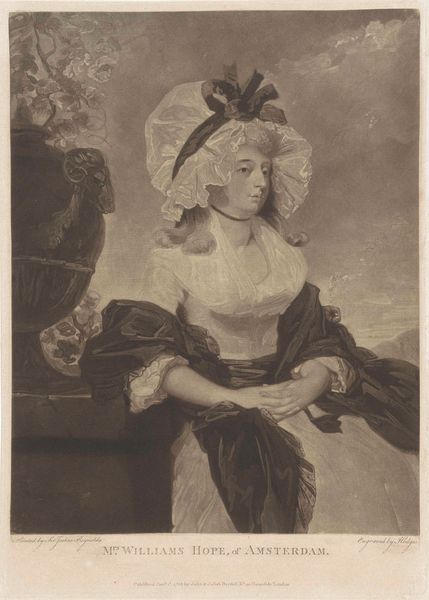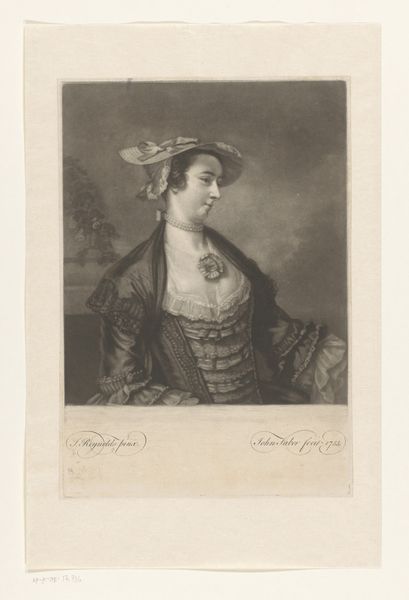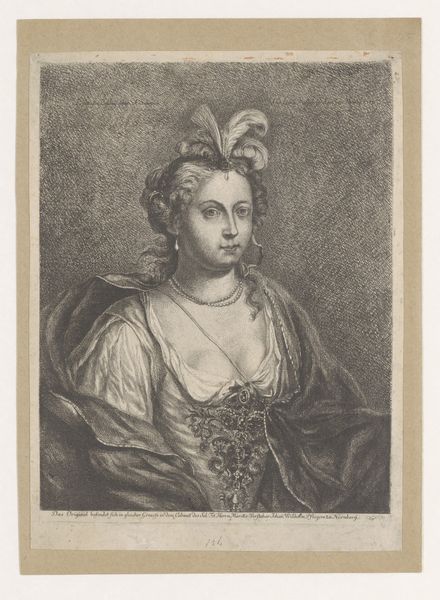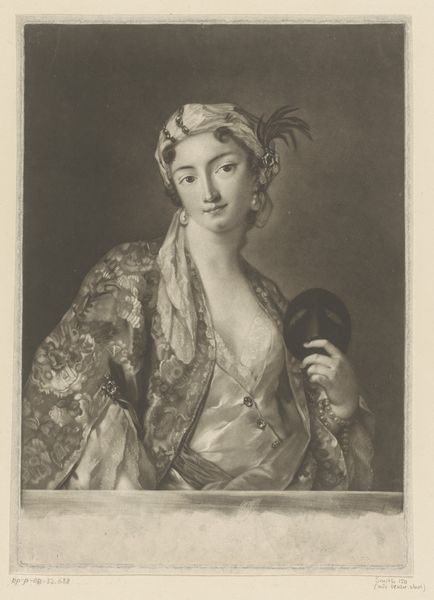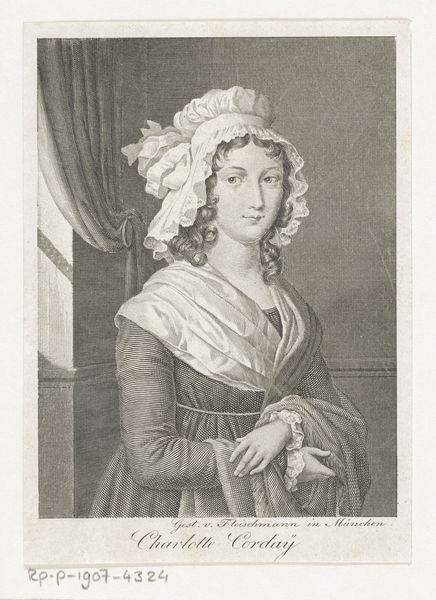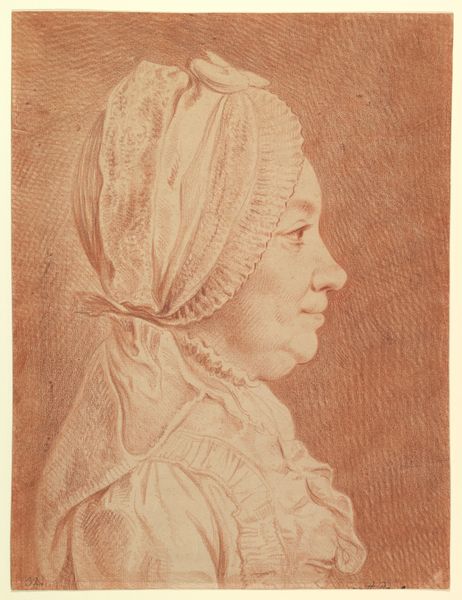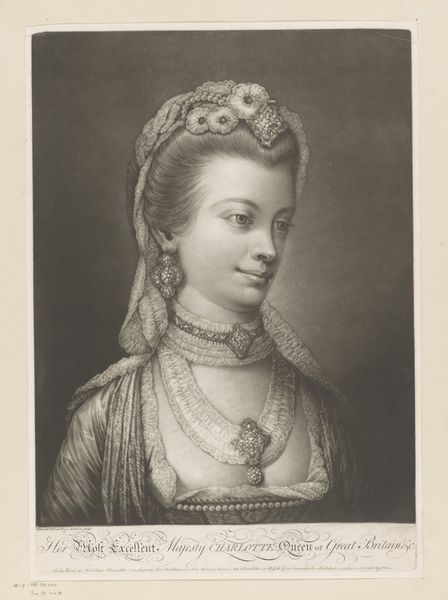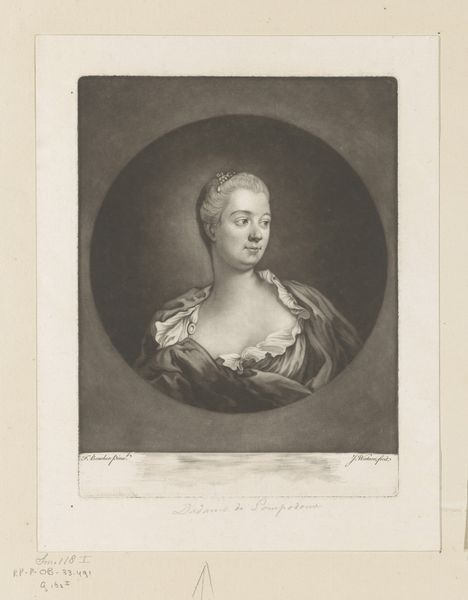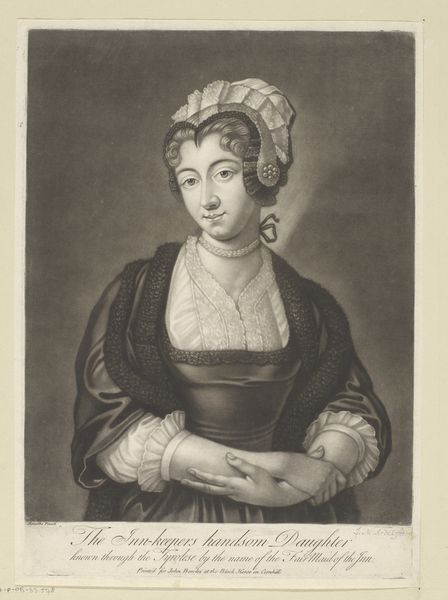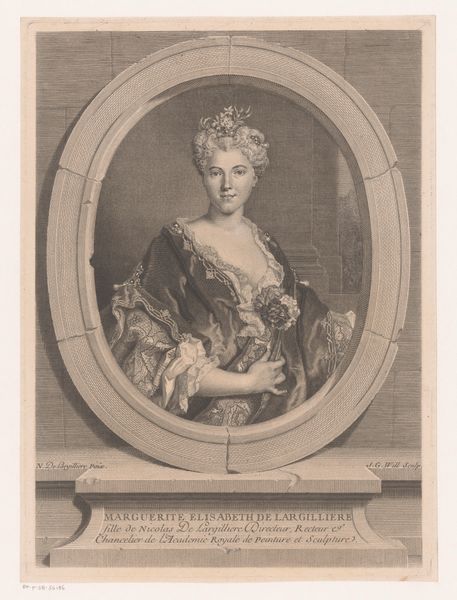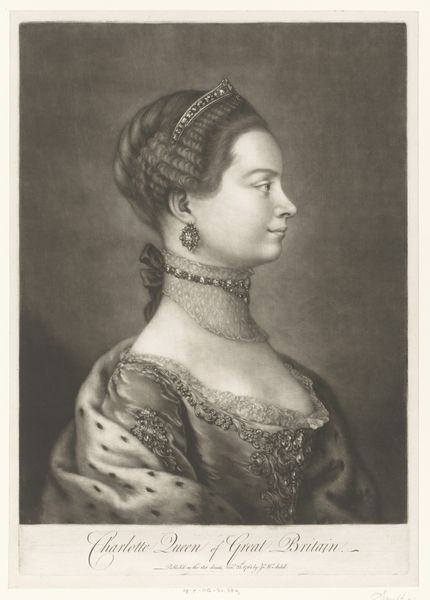
drawing, print, paper
#
portrait
#
drawing
# print
#
charcoal drawing
#
paper
#
portrait drawing
#
history-painting
#
academic-art
#
portrait art
Dimensions: 200 × 167 mm (image/plate); 220 × 180 mm (primary support); 239 × 188 mm (secondary support)
Copyright: Public Domain
Jean-Baptiste de Grateloup created this print of Mme. de Grateloup de Dax sometime in the late 18th century. It's a soft image, but we can read a lot from the conventions of portraiture at the time. The pearls, the hair, the fabric, the lace, the gaze -- all of these visual codes indicate the wealth and social standing of the sitter, but also the expectations of how the upper classes should present themselves in French society. The print was made during the Enlightenment, when ideas about equality were beginning to challenge the old social order. The art world was also changing with institutions like the Royal Academy playing a key role in shaping artistic taste and patronage. As historians, we can research period sources, like fashion plates and social etiquette guides, to understand the image more fully. Ultimately, the meaning of this print is contingent on the social and institutional context in which it was made and viewed.
Comments
No comments
Be the first to comment and join the conversation on the ultimate creative platform.
